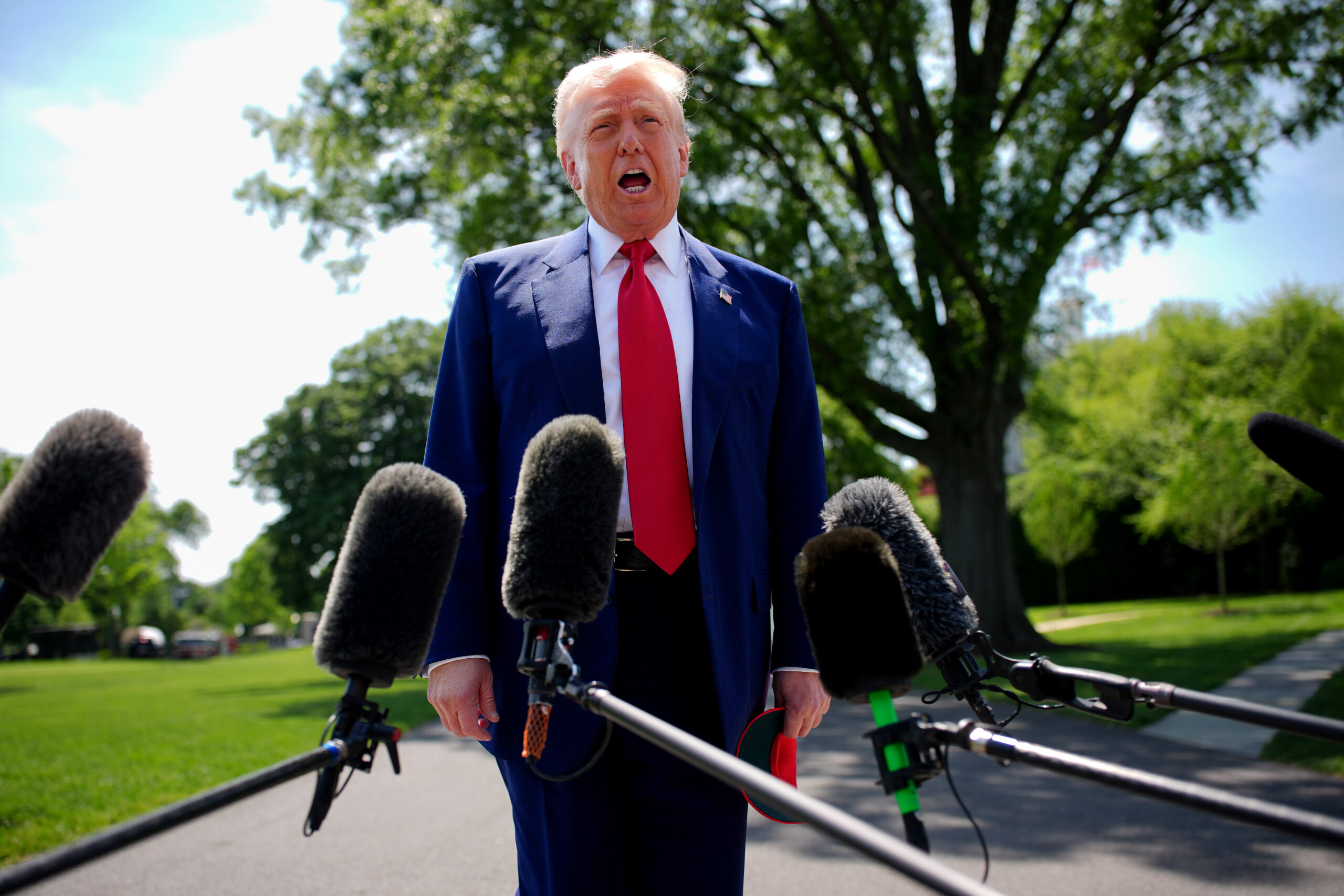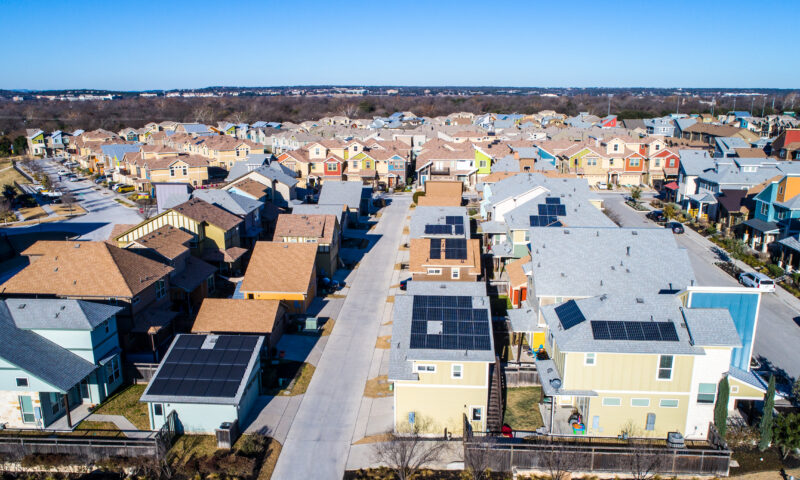Every week since Inauguration Day there’s been some “high noon” reckoning that shines a spotlight on people who must decide whether to acquiesce or to make a difference. It may be a powerhouse law firm caving to the president’s demands for free legal services, or the refusal of a lowly civil servant to turn over the personnel files of citizens to DOGE. In High Noon in America, Capital & Main looks at the individuals and institutions that succeeded or failed to stand up against intimidation.
News coverage of President Trump’s escalating war on immigrants, and of his minions’ search through the parchments of antebellum statutes to justify his actions against them and their protesting supporters, has taken the form of three familiar complaints. Either Trump’s actions are unfair, don’t make sense or will ultimately harm his base. But the mainstream media seem to be avoiding another possibility: Trump’s mental state is markedly deteriorating, leading him, like King Lear, to make erratic decisions and ignore the advice of even his most loyal allies — who themselves are exhibiting some of the president’s cruel and impulsive tendencies, leading to a coarsening of policy debates.
Prior to his victory last November, it became clear that Trump’s speaking performance lagged behind his presidential campaigns of 2016 and 2020. He was making up more stuff than usual and his speeches included more non sequitur-filled discursions. And there was the night he arrived an hour late to one rally, where he suggested the audience just skip asking him questions “and listen to music” instead.
The growing concern over Trump’s mental acuity produced two noteworthy analyses at the time. The first appeared Oct. 6 in the New York Times. Reporters Peter Baker and Dylan Freedman, aided by a computer breakdown of Trump’s rhetoric, found that “the 78-year-old former president’s speeches have grown darker, harsher, longer, angrier, less focused, more profane and increasingly fixated on the past.” In general:
He rambles, he repeats himself, he roams from thought to thought — some of them hard to understand, some of them unfinished, some of them factually fantastical … He digresses into bizarre tangents about golf, about sharks, about his own “beautiful” body. He relishes “a great day in Louisiana” after spending the day in Georgia. He expresses fear that North Korea is “trying to kill me” when he presumably means Iran.
Specifically:
Mr. Trump’s rally speeches now last an average of 82 minutes, compared with 45 minutes in 2016. Proportionately, he uses 13 percent more all-or-nothing terms like “always” and “never” than he did eight years ago, which some experts consider a sign of advancing age.
Similarly, he uses 32 percent more negative words than positive words now, compared with 21 percent in 2016, which can be another indicator of cognitive change.
* * *
One week after the Baker-Freedman analysis, 3,000 medical professionals signed a Duty to Warn petition claiming “Donald Trump is showing unmistakable signs strongly suggesting dementia, based on his public behavior and informant reports that show progressive deterioration in memory, thinking, ability to use language, behavior, and both gross and fine motor skills.”
Duty to Warn’s founder, the psychologist John Gartner, has cited Trump’s “phonemic paraphasias,” a condition in which a speaker suffering from dementia substitutes sounds in place of the words he cannot remember (“mishiz” for missiles, “Chrishus” for Christmas). Then there’s his semantic paraphasia (using inappropriate homonyms such as “oranges” for “origins”), along with what Gartner told an interviewer was a “wide-based gait typical of frontotemporal dementia, sometimes he swings his right leg in a semi-circle.” Harry G. Segal, a senior lecturer in Cornell University’s Psychology Department, noted, “Objectively, Donald Trump has a documented history of lying that is so marked as to be considered ‘pathological.’”
Since Trump’s reelection, however, the New York Times and other major news services, including Associated Press and the Washington Post, seem to have backed off from questioning his mental health — even though Trump’s statements have only become more dissociative and harder to follow.
The Times seemed to particularly gloss over now-President Trump’s more bizarre tirades and tangents delivered at West Point (during which he wandered off into a cautionary tale about “trophy wives”) and Arlington National Cemetery (where he decried Joe Biden and “People pouring through our borders, unchecked, people doing things that are indescribable”).
This accommodationist approach recalls one of the Times’ most egregious acts of sanewashing, when, in 2024, it barely quoted a long, incomprehensible Trump answer to a question about child care legislation — choosing, instead, to translate Trump’s response into a paraphrased policy statement that sounded rational. While Trump’s stream-of-consciousness reply was widely mocked, the Times blandly reported: “In a jumbled answer, he said he would prioritize legislation on the issue but offered no specifics and insisted that his other economic policies, including tariffs, would ‘take care’ of child care.”
* * *
Why isn’t this an issue? After all, journalists and Democrats are both in the middle of self-flagellating mea culpas spurred by Jake Tapper and Alex Thompson’s revelations about President Joe Biden’s cognitive decline and attempts to cover it up. At most, there’s a kind of shrugging acceptance of Trump’s policy zigzags and verbal incoherence — “jumbled answer” stuff. The need for such a discussion is clearer than ever. Forget Trump’s rants about Taylor Swift, his denunciation of Biden’s autopen and all the geography goofs. Among the administration’s mudslide of lies, paranoid exaggerations and ad hominem attacks, two cases suffice to define this moment, when Trump is deciding whether to plunge the country into a war against Iran, as a five-alarm fire.
The first is the fact that despite the administration’s admission that Kilmar Abrego Garcia was erroneously arrested and deported to an infamous foreign prison against a federal judge’s order, it insisted on keeping him in El Salvador and then orchestrated a campaign to depict the Maryland day laborer as a kind of Bond villain.
The second example is Trump’s reflexive, oft-repeated reference to California’s governor, Gavin Newsom, as “Gavin Newscum.” This infantile pejorative, which is, like so many of Trump’s expressions, accepted without comment by mainstream news media and the political class as the price of living in America, seems to be another indication of cognitive decline. Yet the New York Times usually quotes Trump’s social media posts containing the insult without comment or, occasionally, will explain the “pun” to readers: “The president mocked Mr. Newsom on Tuesday by calling him ‘Gavin Newscum.’”
Media corporations may have their reasons for not calling attention to the president’s diminished mental capabilities. While the Times does run analytical pieces about the wisdom or legality of Trump’s decrees against civil liberties (see Adam Liptak’s recent analysis of Trump’s dubious claim to emergency superpowers), its caution may be rooted in the knowledge that Trump has the legal right to shut down news outlets during a national “emergency.” Then, there’s the lesson of the Associated Press, which was banned from White House press conferences for persisting in calling the Gulf of Mexico the Gulf of Mexico. But Trump’s second term has quickly devolved into a toxic circus, in which judges are ignored, justice is militarized and Democratic lawmakers are treated like contestants in a WWE smackdown.
Violence, including shootings and kidnapping plots, have begun to take center stage in the news cycle; Republican reaction to these events, including the June assassination of a Minnesota legislator and her husband, have included mockery and malarial conspiracy theories. This is because Trump’s volatile personality is poisoning the way Americans, especially his political followers, look at the country and their neighbors. A return to normalcy, if this is possible, will take time. It will also require our leading news sources to admit that our leader is not normal.
Copyright 2025 Capital & Main


 The SlickNovember 14, 2025
The SlickNovember 14, 2025
 The SlickNovember 12, 2025
The SlickNovember 12, 2025
 Column - State of InequalityNovember 13, 2025
Column - State of InequalityNovember 13, 2025
 Latest NewsNovember 19, 2025
Latest NewsNovember 19, 2025
 Latest NewsNovember 18, 2025
Latest NewsNovember 18, 2025
 The SlickNovember 18, 2025
The SlickNovember 18, 2025
 Latest NewsNovember 17, 2025
Latest NewsNovember 17, 2025
 Column - State of InequalityNovember 21, 2025
Column - State of InequalityNovember 21, 2025

